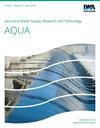Water footprint assessment and its importance in Indian context: a meta-review
IF 4.3
Q2 Environmental Science
引用次数: 0
Abstract
With the increasing population and per capita demand for freshwater, the burden of natural resources has increased many folds. Indian agriculture is still largely dependent on conventional methods of crop production that are mainly inefficient. Water security is essential for social and economic development, having an indispensable role in enhancing health, well-being, and economic progress, particularly in a developing country like India. Water footprint (WF) is an important indicator that helps ascertain the direct and indirect use of water in any process. WF modeling in agriculture enables us to pinpoint the impacts and limitations of the current crop production system. Assessing vulnerabilities across various regions and time helps us prepare actions to improve water productivity and promote sustainable water use. There is considerable spatial variability in blue, green, and gray WF among the different states of India due to their varied climate, soil, and topographic characteristics. WF assessment is critical for developing water allocation strategies, planning water trade, making policies, and implementing remedial measures. This paper describes the significance of WF and its proper management for sustainable crop production in India.水足迹评估及其在印度背景下的重要性:一项荟萃综述
随着人口和人均淡水需求的增加,自然资源的负担增加了许多倍。印度农业在很大程度上仍然依赖于传统的农作物生产方法,而这些方法大多效率低下。水安全对社会和经济发展至关重要,在增进健康、福祉和经济进步方面发挥着不可或缺的作用,特别是在印度这样的发展中国家。水足迹(WF)是一个重要的指标,有助于确定水在任何过程中的直接和间接使用。农业中的WF模型使我们能够准确地指出当前作物生产系统的影响和局限性。评估不同地区和时间的脆弱性有助于我们准备行动,提高水生产力和促进可持续用水。由于气候、土壤和地形特征的不同,印度不同邦的蓝色、绿色和灰色WF具有相当大的空间变异性。世界水论坛的评估对于制定水资源分配战略、规划水资源贸易、制定政策和实施补救措施至关重要。本文阐述了WF及其适当管理对印度可持续作物生产的意义。
本文章由计算机程序翻译,如有差异,请以英文原文为准。
求助全文
约1分钟内获得全文
求助全文
来源期刊
CiteScore
4.70
自引率
0.00%
发文量
74
审稿时长
4.5 months
期刊介绍:
Journal of Water Supply: Research and Technology - Aqua publishes peer-reviewed scientific & technical, review, and practical/ operational papers dealing with research and development in water supply technology and management, including economics, training and public relations on a national and international level.

 求助内容:
求助内容: 应助结果提醒方式:
应助结果提醒方式:


